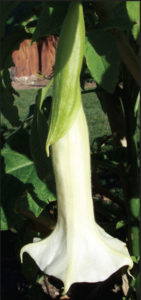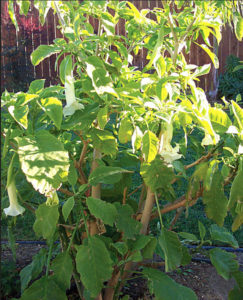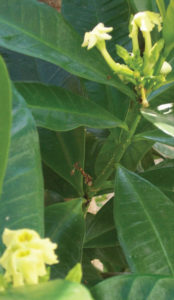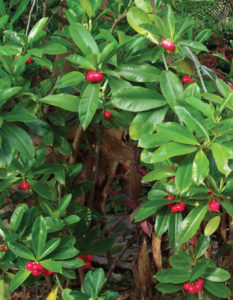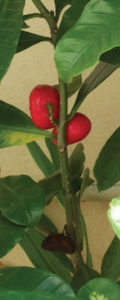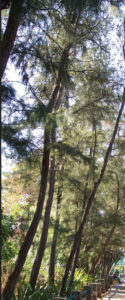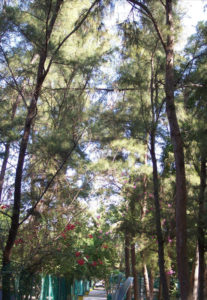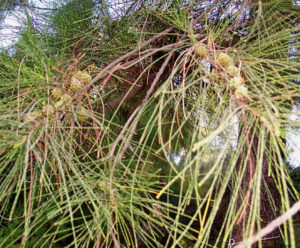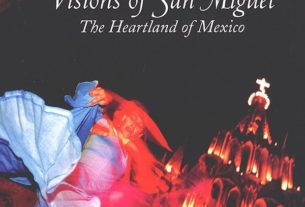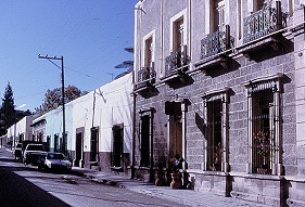Common names, scientific names, use and care, cultivation and propagation tips, flowering habits, history and little-known facts for the curious tourist or resident
Datura (Brugmansia suaveolens)
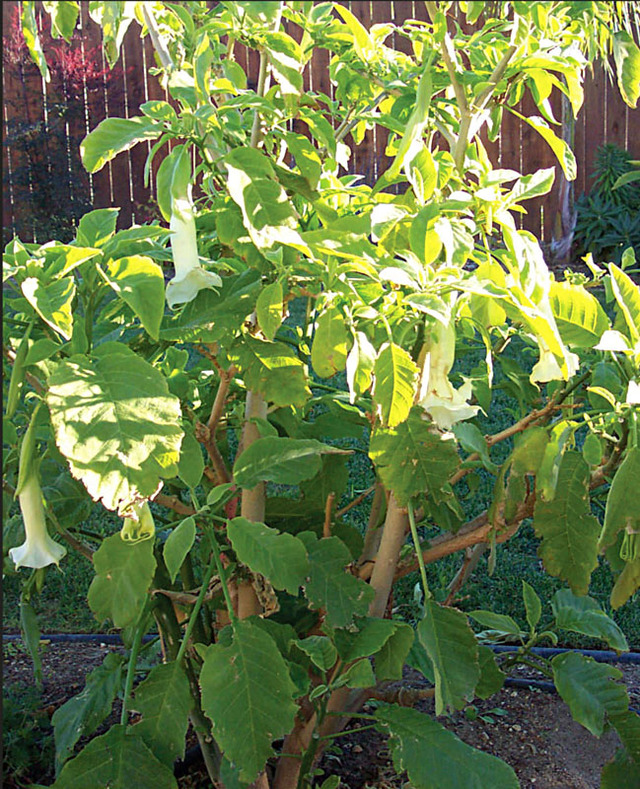
Family: Solanaceae
Alternate Names: Angels Trumpets, Moon Flower
Use: In tropical and sub-tropical climates, this fast-growing shrub is an attractive isolated lawn or garden specimen, and is sometimes used in borders. In cooler areas, it can be container grown.
Flowers: The single, hanging flowers are the attention-getter for this plant — each may be 10 inches or longer. They have a musky fragrance, especially in the evening. The narrow, funnel-shaped flowers appear throughout the year. Other cultivars have orange, yellow, or pink flowers, and B. candida has double blooms.
Cultivation: Datura will grow quickly in any frost-free climate. This plant requires shelter from wind, as it tends to be top-heavy. It prefers fertile, well-drained soil in a sunny or partially shaded spot. The plant will grow to 6 feet in height, and can be trimmed as a tree. Water generously.
Propagation: By 4 to 6-inch cuttings, rooted in a sand-peat mixture.
Note: Datura is attractive to leaf-chewing pests but poisonous to humans due to its content of toxic alkaloids. The plant produces scopolamine, which has medicinal uses, including, in very small quantities, the control of motion sickness.
Fagraea berteroana
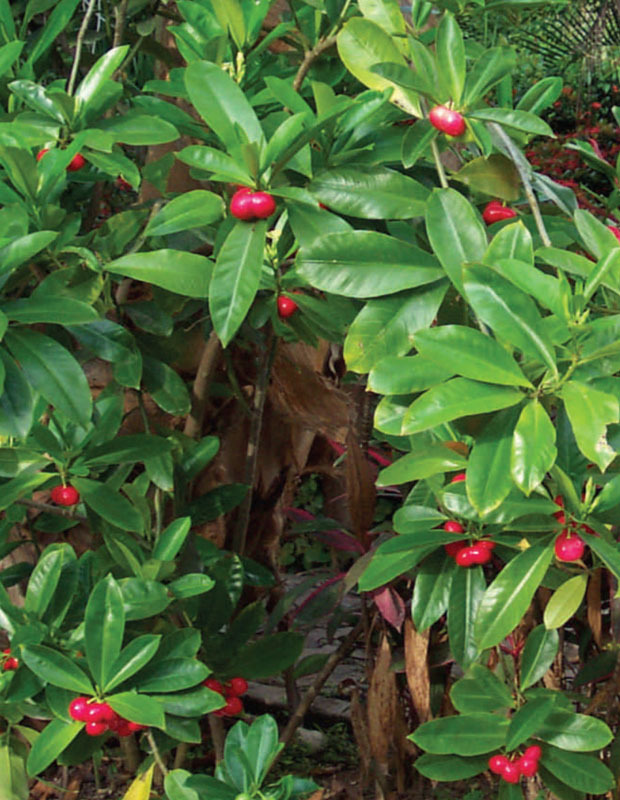
Family: Loganiaceae
Alternate Name: Pua-kenikeni, Bishop’s Egg
Use: Fagraea berteroana is grown for its fragrant flowers, and also used as an ornamental plant in home and commercial landscaping. The wood is useful for carving and other purposes, and the flowers, for scenting coconut oil.
Flowers: Creamy, yellow-white, small, and highly fragrant, these tubular flowers have long been used in Hawaiian leis.
Cultivation: Native to the South Pacific, this plant thrives in warm, humid climates. Give it part sun, ample water in well-drained soil for best growth. It can reach a height of 30 feet, but is most often seen as a medium-sized shrub.
Propagation: The bishop’s egg can be propagated from seed, cuttings, or air layering. It often starts as an epiphyte or strangler.
Note: Mildly toxic.
Maritime Pine (Pino maritimo)
Family: Casuarinaceae or pinaceae
Use: Maritime pine is used for windbreaks and as an ornamental in large gardens. The bark extract has medicinal applications in people and animals. Its dense, strong timber is used for lumber and in the manufacture of particle board and fiber board. The inner bark, young cones, and a tea made from the needles are all sources of nutritious survival food.
Maritime pines have also been used for stabilization of coastal areas threatened by sand dunes, and, experimentally, in the creation of carbon sinks.
Cultivation: The maritime pine originated in Australia, and is one of about 40 varieties of pine found in Mexico. It prefers acidic soil with good drainage. It is hardy, and both drought and salt tolerant.
Propagation: By seed. At maturity, the cones open and release the seeds, which are distributed by wind and by animals.
Contact

